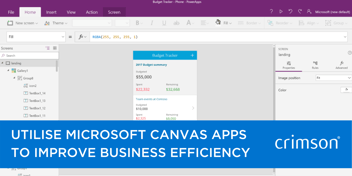The university recruitment and admissions process – how to get it right
Changes to higher education funding are forcing universities to compete in a cut-throat global market where competition levels show now sign of letting up anytime soon.
As a result, universities are being left with no other choice but to pull out all of the stops in an effort to attract new students in order to safeguard their future. These days, it’s not uncommon for establishments to renovate their campuses and even build new lecture theatres, sports halls, libraries and halls of residence in their quest to impress potential students and their parents.
But while the battle for students is becoming widely acknowledged as being the norm these days, a subtle, but incredibly significant change has been taking place among their target audience. The rise of the digital era means students are now encouraged to act and think more like consumers, demanding higher returns on their investment.
And for university Vice Chancellors and CIOs, this means having to completely rethink their priorities and the purpose of the education they provide in order to remain financially viable.
Rapid, responsive, personalised and consistent communication
For some, aside from totally overhauling their physical offering, this involves reviewing their behind-the-scenes processes, such as their IT systems and processes, in a bid to provide today’s new breed of students with rapid, responsive, personalised and consistent responses from the outset.
Providing a high level of customer service from the first enquiry right through to graduation day (and even beyond for alumni) can help universities improve student recruitment, recruit more international students and appeal to more students from local communities.
However, these are complex and challenging times for higher education institutions that want to improve their student engagement. According to recent research by the Higher Education Policy Institute, only 32% of students in England currently think their courses offer good value for money.
This perceived lack of value has been created by a shift in what students think is important from their higher education provider. Yes, they’re still heavily influenced by traditional factors like academic reputation, location, employability and average starting salaries. But they’re also becoming increasingly swayed by softer aspects, such as receiving a high level of communication and support from day one.
There are clearly communication issues that need to be addressed if institutions want to succeed in attracting and recruiting students
The solution is simple. Better student engagement is vital in creating a lasting and positive impression and thriving in an increasingly competitive market.
Many education institutions have adopted one or more Customer Relationship Management (CRM) systems to help them attract, engage and communicate more effectively with their students through digital platforms throughout the student lifecycle. Take our dedicated Microsoft Dynamics 365 HE solution, for instance, it manages and tracks all activities relating to attracting students and communicating with them. It works across multiple channels including social, web, in person and events and enables teams to manage nurturing programmes and prioritise enquiries through behavioural scoring.
Highly-personalised campaign management and execution are handled through the solution and performance is mapped against each stage of the journey - attract, nurture and recruit. In turn, this level of joined up data analysis and communication enables universities to nurture stronger and more personal relationships with prospective candidates and keep students’ information up-to-date by facilitating and tracking every interaction they have with them across different platforms.
Not only does this bring a sense of ownership to the teams and establish a real drive to meet targets and deadlines to see visible improvement on the dashboards, they can also set goals and targets to measure their recruitment and admissions performance in real-time.
A major university in the north west has a Dynamics 365 system that has enabled it to implement more efficient processes that are specifically geared towards attracting more students, along every step of the admissions process, from application, selection and fee assessment, to the offer stage.
Essentially, its team has the insight and resources to attract prospects with more engaging campaigns, events and information across traditional and social channels; recruit students by processing their applications efficiently and delivering a seamless experience and retain students by delivering a rich experience throughout the student journey.
Attracting and recruiting students may be an age-old process, but for many universities, doing what they’ve always done simply isn’t an option anymore. The future’s digital, interconnected and engaging – and what 21st century students are expecting at the very least from the world of higher education. The question is, are you delivering it?



